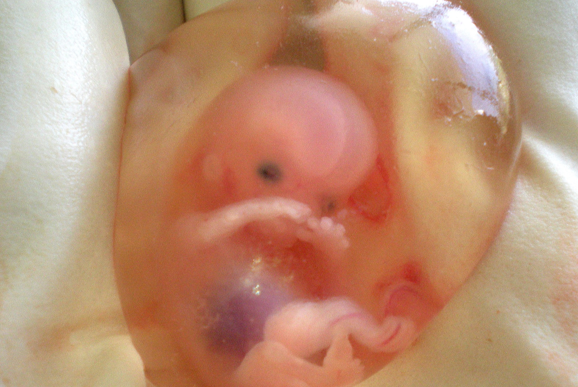WASHINGTON, D.C., November 1, 2016 (LifeSiteNews) — More pregnant girls and women are taking dangerous chemicals to terminate their pregnancies, according to a Reuters news service analysis.
Article by Fr. Mark Hodges
Reviewing Planned Parenthood’s 2014 reported data, Reuters found that chemical abortions are on the rise, making up 43 percent of the total number of abortions at the nation’s largest abortion conglomerate. That percentage is up from 35 percent in 2010, even though abortions generally are on the decline.
Danco Laboratories, the manufacturer of abortion drugs for the U.S. market, sought to expand its customer base and the Obama administration issued new federal guidelines last March that allowed the deadly chemicals to be prescribed as late as 10 weeks’ gestation, up from seven. The result was chemical abortions tripled in some states.
Mifepristone, or RU486, blocks a vital nutrient hormone, causing the baby to literally starve to death in utero. Other chemicals are given to the mother to soften and expand her cervix and/or generate uterine contractions so that she will deliver her dead baby.
Called “the first Human Pesticide,” RU486 is manufactured by an offshoot of the same corporation that supplied Hitler with Zyklon B gas used in death camps.
RU486 was formulated in the 1980s and legalized in England in 1991. Banned in the U.S. under the pro-life George H.W. Bush administration, the pro-abortion Bill Clinton administration literally brought RU486 to the U.S. without requiring further clinical trials.
Pro-abortion politicians assured American women that the way for RU486 will be cleared “almost as quickly as the manufacturer comes forward with an application for approval. … The FDA is … removing the regulatory roadblocks to permitting this drug into the U.S.”
But since being made legal in the U.S. in 2000, the Food and Drug Administration has been forced to issue public health advisories related to the drug. Some women who took RU486 have died from sepsis (serious infection involving the bloodstream).
According to the FDA, in the first five years of use there were eight reported deaths, nine life-threatening incidents, 116 blood transfusions, and 232 hospitalizations. In total, more than 1,050 women experienced serious medical problems during that period.
The drug’s label itself states, “Serious and sometimes fatal bleeding and infections occur.” RU486’s own “Patient Agreement” further states, “In some cases, the treatment will not work. This happens in about five to eight women out of 100. … If pregnancy continues after any part of the treatment … there may be birth defects.”
In July 2009, the European manufacturer of RU486 acknowledged that the abortion drug had been attributed to dozens of women’s deaths in Europe and even more worldwide.
The Italian Ministry of Health Press Office noted “32 confirmed dead after taking of RU 486,” and two other women died from medical abortions from its accompanying drug. “A recent Australian study reported that complications after medical abortion are much more frequent than those due to surgical abortion,” the Italian government said.
But the actual number of deaths will never be known because medical reports cite the technical cause of death, such as infection, even though RU486 is responsible for the fatal infection.
In rural Iowa, where clinics are few and far between, Planned Parenthood does chemical abortions without a doctor or a nurse but by telephone video conferencing, which is called “telemed” abortion.
The mother has her blood pressure taken and an ultrasound of the baby is sent to an off-site abortionist, who talks to the woman via video and then dispenses her abortifacients. Since “telemed” abortions began in Iowa in 2008, chemical abortions increased to 64 percent of all abortions, the highest U.S. rate.
In New York, Hawaii, Washington and Oregon, abortion drugs are sent by mail.
Is the trend toward chemical abortion safer than surgical abortion? Ask Monty Patterson, the father of 18-year-old Holly Patterson, who died after taking RU486 in 2003.
Holly was given RU486 from a San Francisco Planned Parenthood but began experiencing severe pain and bleeding from the second part of the two drug abortion process.
Patterson’s boyfriend called Planned Parenthood several times to report severe cramping, constipation, nausea and vomiting. She went to an emergency care facility but was given painkillers and sent home.
Holly died three days after taking RU486. The Alameda County Coroner’s report stated Holly died of a uterine infection. (Although the coroner did make a side note that the use of RU486 resulted in an incomplete abortion that led to Holly’s uterine infection.)
“As long as mifepristone is allowed to be on the market, then women will be subject to the risk of this infection,” Patterson said. “The only preventive measures are for women to seek other alternatives or decline the administration of these abortion pills. These abortion drugs are unpredictable and the health risks can be fatal.”




















